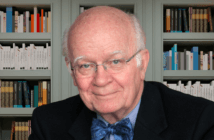Lewis Center Director Doug Powe explains that church leaders today are forced to lead amid constantly changing expectations. He outlines a four-step process to help a church deal with a change in direction.
We all live with expectations. Even kindergarten children are expected to read at a certain level and count to a certain number. No one can escape expectations. But for congregational leaders the challenge is that expectations seem to be constantly changing. Many believed they signed up to keep things moving in the direction already charted. But what if the charted course is no longer viable? It can be unsettling to have expected standards yanked out from under your feet. So how does a leader lead amid changing expectations?
1. Name the change
It is important to name the change taking place and not simply to ignore it. For instance, if the expectation is now that all ministries must in some way connect with the community, be forthright in naming that expectation. As a ministry leader, I may not like the new expectation, but ignoring it is not going to make it go away. It is important for a leader to name the new expectation so others will know what the new standard is.
2. Explain the why
Simon Sinek, the author of Start with Why, shares the importance of explaining the “why.” It’s not enough to just name the changing expectation. Why is it changing? If the expectation is that all ministries must in some way connect with the community, then the why is so that the ministries will not just be congregationally focused. A word of caution: Just because the why is explained does not mean individuals will jump immediately on board. Some ministry leaders may still oppose the new expectation even when the purpose is explained. But explaining the why prevents others from making up their own version of what is taking place. Individuals may not agree with the why, but the reason for the new expectation has been made explicit.
3. Share the vision
It is not enough to explain why a new expectation has been set. A compelling vision for how to meet the new standard needs to be shared. The vision should create enthusiasm and give direction. Continuing with the example of ministries connecting with the community, one way of setting the vision would be to share how wonderful it has been for many in the congregation to experience the ministries. This is an opportunity for those in the community to experience the ministry in the same way.
The next step is answering the unasked question, “Some of you are wondering how we help those in the community to connect to our ministry?” It will be different for each ministry, but here are a few things to keep in mind. First, think about spaces outside of the church where you may be able to do your ministry at least once a month. Second, think about someone you can talk to in the neighborhood who may have ideas to help you connect with others. Third, find out what other congregations with a similar ministry are doing that can be adapted to your context.
Setting a vision that helps to create enthusiasm and give direction will help leaders to see new possibilities. When we’ve been focused on meeting one set of expectations, it can be challenging to see how we can meet another one. Helping others to see a way forward goes a long way.
4. Keep communicating
It is not enough to hold one meeting where a new expectation is set, you explain why the change is required, and you share a new vision. It is important to continue communicating the why and the vision. We all get set in our ways. Just because we are asked once to change does not mean it will happen. For example, if I am asked to submit receipts electronically when I’ve been handing in paper copies for years, explaining once how this change will be more efficient and decrease my carbon footprint probably is not going to make it happen. It will require multiple communications reinforcing the importance of the change for it to take hold.
We all deal with changing expectations. The key is to lean into the curve. Naming the change, explaining why the expectation is changing, sharing a vision and communicating the change repeatedly will make things go smoother.
Related Resources
- Discovering God’s Future for Your Church Video Tool Kit
- The Importance of Why by Graham Standish
- How Leaders Create Culture Every Day by Ryan Stigile






